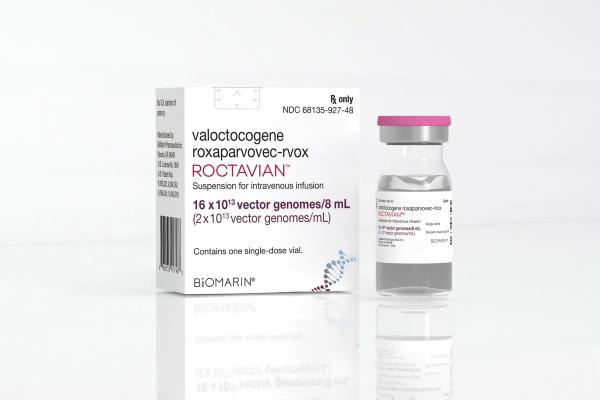Valoctocogene roxaparvovec and Alcohol/Food Interactions
There is 1 alcohol/food/lifestyle interaction with valoctocogene roxaparvovec.
Valoctocogene Roxaparvovec Food/Lifestyle
Moderate Food Interaction
After receiving valoctocogene roxaparvovec, alcohol consumption should be avoided for at least 1 year and limited thereafter. Valoctocogene roxaparvovec can cause liver problems, which may make the medication less effective in treating your condition. Consuming other substances that can also affect the liver such as alcohol after receiving valoctocogene roxaparvovec may increase that risk. Symptoms of liver problems include fever, chills, joint pain or swelling, unusual bleeding or bruising, skin rash, itching, loss of appetite, fatigue, nausea, vomiting, abdominal pain, dark urine, pale stools, and/or yellowing of the skin or eyes. Blood tests to monitor liver function should be performed before and after treatment with valoctocogene roxaparvovec. Talk to your doctor if you have any questions or concerns. It is important to tell your doctor about all other medications you use, including vitamins and herbs. Do not stop using any medications without first talking to your doctor.
Switch to professional interaction data
Valoctocogene roxaparvovec drug interactions
There are 302 drug interactions with valoctocogene roxaparvovec.
More about valoctocogene roxaparvovec
- valoctocogene roxaparvovec consumer information
- Check interactions
- Compare alternatives
- Side effects
- Dosage information
- During pregnancy
- Drug class: miscellaneous coagulation modifiers
- En español
Related treatment guides
Drug Interaction Classification
| Highly clinically significant. Avoid combinations; the risk of the interaction outweighs the benefit. | |
| Moderately clinically significant. Usually avoid combinations; use it only under special circumstances. | |
| Minimally clinically significant. Minimize risk; assess risk and consider an alternative drug, take steps to circumvent the interaction risk and/or institute a monitoring plan. | |
| No interaction information available. |
See also:
Further information
Always consult your healthcare provider to ensure the information displayed on this page applies to your personal circumstances.


